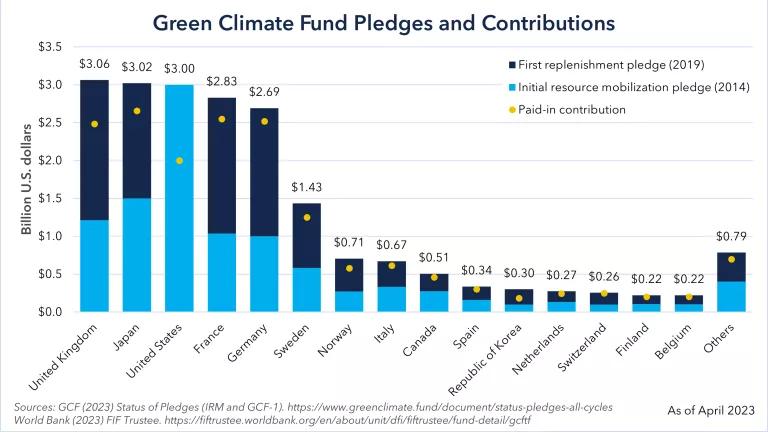New Legislation Would Require Review of FEMA Buyout Efforts
A bi-partisan group of Senators and Members of House of Representatives have introduced legislation to determine why it so difficult for repeatedly flooded-homeowners to obtain assistance to move to higher ground. Senators Brian Schatz (D-HI) and Tim Scott (R-SC) have teamed up with Representatives Earl Blumenauer (D-OR) and Mark Sandford (R-SC) want the GAO to find out why it takes years for FEMA to buyout flood prone properties from homeowners who want to move out of harm's way. GAO would also make recommendations for how buyouts could be done more quickly and made available to more people -- something the nation needs to do in the face of sea level rise.

Nichols, SC, USA— Homeowner surveys flood damage from Hurricane Matthew. Floodwaters remain in his home three days later.
A bi-partisan group of Senators and Members of House of Representatives have introduced legislation (S. 2862 and H.R. 5846) that will determine why it so difficult for repeatedly flooded-homeowners to obtain assistance to move to higher ground.
Senators Brian Schatz (D-HI) and Tim Scott (R-SC) have teamed up with Representatives Earl Blumenauer (D-OR), Mark Sanford (R-SC), Sean Duffy (R-WI) and Peter DeFezio (D-OR) to introduce legislation that requires the Government Accountability Office (GAO) to assess how voluntary buyouts funded by the Federal Emergency Management Agency (FEMA) can be an easier option for people who have wearied of living in the vicious cycle of flood-rebuild-repeat. The legislation was announced in a joint press release earlier today.
In the wake of major floods, it’s not uncommon for FEMA and other federal agencies to provide funding to local and state governments to purchase the damaged homes of willing homeowners. But FEMA-backed buyouts can take years to complete and move people out of harm's way.
After a flood hits the community, months can go by before the community and FEMA offer the option of helping people move. By then, families have received other forms of disaster assistance and started (or completed) the laborious process of rebuilding. For those homeowners still interested in a buyout at that point, additional years can pass before they find out if their flood prone home will actually be purchased. Even after FEMA approves funding, more months can go by before homes are actually purchased, the owners and their families are able to move, and the property returned to open space, which is what normally happens with FEMA-financed buyouts.
Why does this process take so long? That’s what these engaged elected officials want to find out.
During that long wait, homeowners are left in limbo and face many difficult questions. Will they flood again and have to rebuild? Should they pay money for basic upkeep of their home, knowing that if their home is bought out, they won’t be paid for those costs? Do they just stop maintaining their home, hoping a buyout eventually comes through? And what if a buyout doesn’t materialize?
The legislation requires GAO to conduct a comprehensive evaluation of FEMA’s current practices for funding the purchase of properties and make recommendations for making the process more efficient and effective. Additionally, GAO will examine alternative methods for conducting buyouts more efficiently, like pre-approving and guaranteeing interested homeowners a buyout before a flood occurs, an idea NRDC has championed. The nation needs to help more people get assistance sooner, allowing them to move out of harm’s way, and spare them the uncertainty and years long wait that are hallmarks of conventional buyout efforts.
This legislation is sorely needed. Across the United States, thousands of homes are repeatedly damaged by floodwaters and rising tides. And that number will increase dramatically, due to the increasing frequency of floods and sea level rise. Between four and thirteen million Americans will see their homes inundated by rising sea levels by the end of this century. Before these homes are ultimately lost to the sea, they will flood numerous times and FEMA will pay to rebuild them each and every time, through the National Flood Insurance Program. NRDC estimates the costs of repeatedly rebuilding these homes will be in the hundreds of billions of dollars. In many cases, helping a homeowner relocate will cost the the federal government far less than paying to rebuild the same home multiple times.
The bi-partisan legislation introduced this week will shed some much needed light on how we can do buyouts better, getting assistance to homeowners sooner, and saving the National Flood Insurance Program (NFIP), and hence taxpayers, the expense of repeatedly paying to rebuild homes after they flood.
In addition to NRDC the following groups support this legislation (s2862-hr5846_support_letter.pdf):
- Association of State Floodplain Managers
- National Association of Realtors
- R Street Institute
- Consumer Mortgage Coalition
- Enterprise Community Partners
- The Pew Charitable Trusts
- American Rivers
- The Nature Conservancy
- Union of Concerned Scientists




